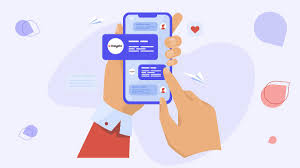The Role of Translation Services in US Education and Learning
In the globalized and multicultural world of today, education has ceased to be restricted by borders. The American education system, with its massive enrollment of international students and immigrant populations, has turned into a melting pot of cultures, languages, and educational needs. The systems are getting evolved, and with that, the demand for communication has also changed. Translation services have proved to be most useful by making education accessible, inclusive, and available for every student, regardless of their linguistic background.
Whether the translation refers to course material for non-native speakers, interpretation of parent-teacher conversations, or facilitation of research collaboration through translation, it is indeed irreplaceable. In this blog, we would like to show how translation services actually help in education and learning in the U.S, with both K-12 schools and higher education institutions as examples.
Why Translation Services Are Essential in U.S. Education
The U.S. has a large concentration of students who do not speak English. According to the National Center for Education Statistics, more than 10 percent of students in U.S. public schools stated that they speak a language other than English in their homes. The trend exists even at the level of a university, where international students form a major part of U.S. universities’ student bodies.
For these students, language barriers may be barriers to successful academic endeavors in a context in which they are not easily able to understand lessons or participate in class discussions and do assignments. Translation services might help eliminate these barriers by making such materials and communication available in the student’s native language, with the ultimate aim of better understanding and learning outcomes.
Examples of Translation Services in Education in the Real World
San Jose Translation Services in Local Schools
In San Jose, California, a demographically diverse city, schools have increasingly turned to San Jose translation services to enable students and their families to find their way through the school system. The great influx of Spanish-speaking students into the San Jose Unified Schools seems like an infinite story. To fill the language gap, the district has engaged professional translation companies to render various documents, such as enrollment forms, notification about parent-teacher meetings, and learning resources, into Spanish and English. In this way, every parent is kept informed, whether they know English or not, and hence can participate in their children’s education.
A prime example was when a new STEM program was offered at one of the middle schools in San Jose. Translators worked with teachers to ensure that the course materials and teachers’ manuals were available in Spanish, Mandarin, and Vietnamese, allowing students from non-English-speaking backgrounds to fully participate in the program and develop their STEM skills along with other students.
Dallas Translation Services in Higher Education
The University of Texas at Dallas, which boasts thousands of foreign students, employs Dallas translation services to help promote understanding and education among students who do not speak English. There are a lot of students who hail from China, India, and South Korea, and the proper translation of university documents, including application forms, transcripts, and study materials, is critical to their success.
One of the major applications the university makes of translation services is admissions. Because American institutions demand a great degree of English proficiency among students, most students from non-English-speaking countries will require help in deciphering the precise requirements for applications, visas, and scholarships. Professional translators ensure complex legal and academic terminologies are translated to simplified language, providing international students with clear directions as they set out on their studies in America.
In addition to that, the university offers translation services for non-academic activities, such as academic advice consultations and career guidance. This way, all the students, irrespective of their native language, feel confident and supported while following their goals in education.
Areas Where Translation Services Are Utilized in U.S. Education
Course Materials and Textbooks
Translation services aid in the translation of textbooks, handouts, and learning materials into different languages. This is for the purpose of ensuring that students from diverse backgrounds are equally able to access the education being provided in U.S. classrooms. Through access to translated documents, students are able to learn and comprehend complex ideas without the added burden of language gaps.
For example, in an extremely high-percentage Mandarin-speaking school district in California, translators have worked to translate foremost science and math books into Mandarin. This has allowed students to catch up to their classmates and dominate areas that they would otherwise have fallen behind in due to language.
Parent-Teacher Communication
Translation services also make a point of enabling parents and teachers to hold effective communication. Congressional activities include parent-teacher conferences, and translated conference documents keep all parents abreast of their children’s education, regardless of the language they speak at home.
Translation services in San Jose neighborhoods bridge the gap between non-English-speaking parents and basic facts such as school events, report cards, and even disciplinary notifications. Thus, they would be prompted to a greater extent become involved in their children s lives which improve student performance.
Test Standardization and Assessment
Most students participating in the U.S. education system are required to take standardized tests such as the SAT or ACT, which are decisive in college entry. For non-native speakers of English, such tests can be considered as the greatest impediment toward his success. Through translation service, it provides the test direction, practice tests, and sample tests in non-English language versions, so that students are easily able to understand what is expected from them when tested.
For example, the College Board, the SAT administrator, provides translated test instructions and sample items to students for whom English is not the first language. This is a great step towards enabling students from various backgrounds to compete on equal grounds in college admission.
The Future of Translation Services in Education
With the U.S. becoming increasingly diverse, the demand for educational translation services will continue to rise. Online education, for example, will necessitate even more universally available learning materials to reach students across the world. Online degree-granting universities must provide coursework in many languages to meet the needs of international students who can study online.
The increasing use of machine translation software such as Google Translate and artificial intelligence-driven translation services will help to fill these gaps. Nevertheless, although these technologies have improved markedly, human translators continue to offer the subtlety, contextual information, and precision essential in quality educational content. Translation services, whether in San Jose, Dallas, or virtually any U.S. city, will remain an indispensable tool in equalizing educational opportunities.
Conclusion
Translation services are a vital component of the U.S. educational system, with the mission of providing every student, no matter what their language origin, with the tools and assistance they require to be successful.
From city K-12 schools in San Jose to colleges in Dallas, translation services eliminate language barriers, making available students and their families alike the resources and data they require to excel academically. As the U.S. becomes more established as a global center of learning, the work of translation services will continue to become more vital in promoting inclusivity and ensuring educational achievement for everyone.




